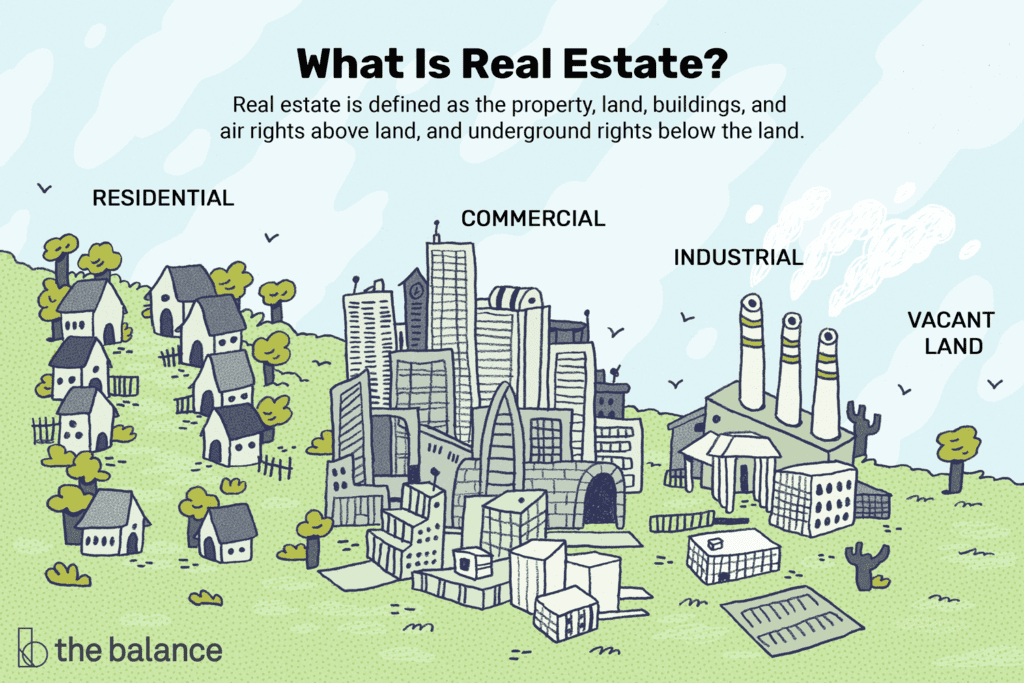The commercial real estate market offers a wide array of investment opportunities for individuals looking to diversify their portfolios and generate consistent income. However, understanding the ins and outs of this complex market can be challenging for beginners. This comprehensive guide aims to help you navigate the world of commercial real estate by covering key topics, providing real-world examples, and illustrating essential formulas and calculations.
Basics of Commercial Real Estate
Commercial real estate refers to properties intended for business purposes, such as office buildings, retail spaces, warehouses, and multi-family properties with five or more units. Investors can earn income from commercial properties through rent collection, property appreciation, or a combination of both.


Starting in Commercial Real Estate with Little Money
There are several ways to begin investing in commercial real estate with limited funds:
a. Real Estate Investment Trusts (REITs): These are publicly traded companies that own, operate, and finance commercial properties. Investors can purchase shares of REITs, offering exposure to the commercial real estate market without the need for significant capital.
b. Real Estate Crowdfunding: This approach allows investors to pool their money with others to invest in commercial properties. Platforms like Fundrise and RealtyMogul offer various investment options and low minimum investments.
c. Partnerships: Forming a partnership with experienced investors can help you gain access to larger deals while sharing the costs and responsibilities.
The First Rule of Commercial Real Estate
The first rule of commercial real estate is “location, location, location.” Choosing a property in a prime location with high demand and growth potential is critical for investment success. Factors to consider include accessibility, visibility, local amenities, population growth, and employment trends.
Example: A well-located office building in a growing business district will likely attract more tenants and command higher rents compared to a similar property in a less desirable area.
The Four Phases of Commercial Real Estate
The commercial real estate market typically moves through four phases:
a. Recovery: Characterized by low demand, high vacancies, and little new construction. This phase presents opportunities for investors to acquire properties at discounted prices.
b. Expansion: As demand increases and vacancies decrease, developers start new construction projects. Investors can benefit from property appreciation and increasing rental rates during this phase.
c. Hyper Supply: A period of oversupply, marked by increasing vacancies and declining rental rates. Investors should be cautious and focus on maintaining occupancy levels.
d. Recession: High vacancies and declining demand lead to reduced property values and rental rates. This phase can be an opportune time for cash-rich investors to acquire distressed assets.
The Four Types of Real Estate
There are four main types of real estate:
a. Residential: Single-family homes, townhouses, condos, and small multi-family properties.
b. Commercial: Office buildings, retail spaces, warehouses, and large multi-family properties.
c. Industrial: Factories, distribution centers, and storage facilities.
d. Land: Undeveloped land or land used for agriculture or resource extraction.
Making Money in Commercial Real Estate
Investors can earn money from commercial real estate in two ways:
a. Rental Income: Investors collect rent from tenants, providing a consistent stream of income.
b. Property Appreciation: The value of the property may increase over time, allowing investors to sell at a higher price.
Example: An investor purchases a retail property for $1 million and collects $100,000 in annual rent. After five years, the property’s value increases to $1.2 million. The investor has earned $500,000 from rental income and $200,000 from appreciation, totaling $700,000 in returns.
Average Return on Commercial Real Estate
The average return on commercial real estate varies depending on factors such as property type, location, and market conditions. Historically, commercial properties have generated annual returns of 6-12%. However, individual performance may differ significantly, and it is crucial to conduct thorough due diligence before investing.
How Commercial Real Estate Owners Make Money
Commercial real estate owners make money through rental income, property appreciation, and capitalization rate compression. Successful owners focus on attracting and retaining quality tenants, managing expenses, and strategically selling properties when market conditions are favorable.
The Three C’s of Real Estate
The three C’s of real estate are critical factors for evaluating investment opportunities:
a. Cash Flow: The net income generated from the property, which can be used to cover expenses and provide a consistent return on investment.
b. Capital Appreciation: The increase in a property’s value over time, which can be realized when the property is sold or refinanced.
c. Control: The ability to influence a property’s performance through active management, such as improving operations, renovating the property, or negotiating better lease terms.
Types of Real Estate That Make the Most Money
There is no definitive answer to which type of real estate makes the most money, as success depends on market conditions, individual investment strategies, and property management. However, some potentially high-return sectors include industrial properties (e.g., warehouses and distribution centers), multi-family properties, and niche commercial real estate (e.g., self-storage facilities or data centers).
Easiest Types of Real Estate
The “easiest” types of real estate may vary depending on an investor’s experience and preferences. Generally, single-tenant commercial properties, such as triple net lease retail spaces, can be relatively straightforward to manage, as tenants are often responsible for property taxes, insurance, and maintenance. Additionally, investing in REITs or crowdfunding platforms can provide exposure to commercial real estate with minimal hands-on management.
Money Needed to Invest in Commercial Property
The amount of money needed to invest in commercial property depends on factors such as property type, location, and investment strategy. Generally, a down payment of 20-30% of the property’s purchase price is required, along with sufficient funds to cover closing costs, due diligence, and any necessary renovations. Alternatively, investors can explore options like REITs and crowdfunding platforms, which often have lower minimum investments.
Profitability of Commercial Property
Commercial properties can be profitable investments, offering the potential for stable cash flow and capital appreciation. However, profitability is contingent on factors such as property management, market conditions, and investment strategy. Conducting thorough research and due diligence is essential for maximizing the potential for success.
Earnings from Commercial Property
Earnings from commercial property can vary widely depending on factors such as property type, location, and lease terms. For example, a well-managed multi-family property in a high-demand area might generate a net income of 6-8% of the property’s value annually. Meanwhile, an industrial property with long-term leases to creditworthy tenants might produce a similar return.
In conclusion
Navigating the commercial real estate market can be a rewarding endeavor for beginner investors who take the time to understand the basics, conduct thorough research, and adopt a disciplined investment approach. By considering factors such as property type, location, and market conditions, investors can make informed decisions and capitalize on the potential for consistent income and capital appreciation.





































